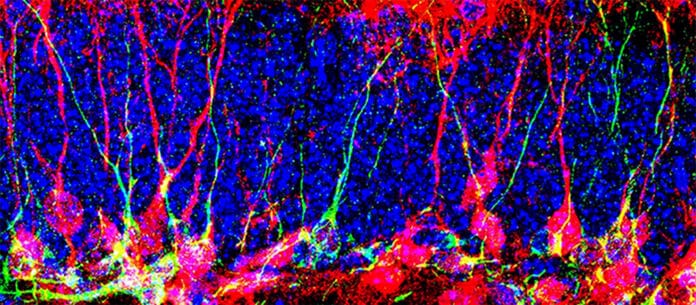Cellular metabolism is essential for adult neural stem/progenitor cell (NSPC) behavior. These cells can be reactivated to form new neurons. However, its role in the transition from quiescence to proliferation has yet to be fully understood.
A team led by scientists from the Universities of Geneva (UNIGE) and Lausanne (UNIL) has discovered the importance of cell metabolism in this process and identified how to wake up these neural stem cells and reactivate them. They successfully increased the number of new neurons in the brain of adult and even elderly mice.
The brain is constructed during embryonic development by neural stem cells (NSCs), which produce all other central nervous system cells, including neurons. Interestingly, NSCs keep growing and can produce new neurons in specific brain regions even after the brain has fully developed. Adult neurogenesis is a biological process crucial for particular tasks, including memory and learning.
However, in the adult brain, these stem cells become more silent or “dormant” and reduce their capacity for renewal and differentiation. As a result, neurogenesis decreases significantly with age.
Scientists uncovered a metabolic mechanism by which adult NSCs can emerge from their dormant state and become active.
Francesco Petrelli, a research fellow at UNIL and co-first author of the study with Valentina Scandella, said, “We found that mitochondria, the energy-producing organelles within cells, regulate the level of activation of adult NSCs.”
A crucial component in this control is played by the mitochondrial pyruvate transporter (MPC), a protein complex first identified by Professor Martinou’s team eleven years ago. Its activity affects the available metabolic possibilities for a cell. Scientists can awaken dormant cells by altering their mitochondrial metabolism by understanding the metabolic mechanisms that separate active cells from dormant cells.
By utilizing chemical inhibitors or creating mutant mice for the Mpc1 gene, biologists have been able to block MPC activity. The scientists stimulated dormant NSCs and subsequently generated new neurons in the brains of adult and even old mice by using pharmacological and genetic approaches.
Professor Knobloch, co-lead author of the study, said, “With this work, we show that redirection of metabolic pathways can directly influence the activity state of adult NSCs and consequently the number of new neurons generated.”
Jean-Claude Martinou, co-lead author of the study, said, “These results shed new light on the role of cell metabolism in regulating neurogenesis. In the long term, these results could lead to potential treatments for conditions such as depression or neurodegenerative diseases.”
Journal Reference:
- Francesco Petrelli, Valentina Scandella et al. Mitochondrial pyruvate metabolism regulates the activation of quiescent adult neural stem cells. Science Advances, 1 Mar 2023, Vol 9, Issue 9. DOI: 10.1126/sciadv.add5220
